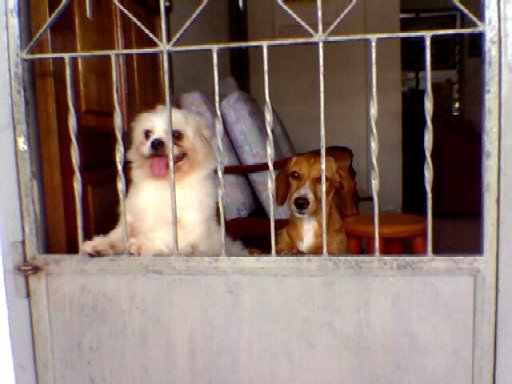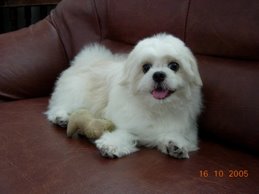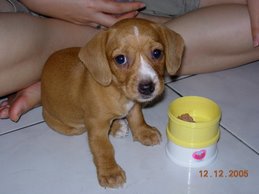Canine Arthritis Information For Pet Owners
Osteoarthritis is a disease of degenerative
joints. In time, most of us and our elderly dogs
will suffer from wear and tear of cartilage,
protecting the bone. There is no known cure,
yet, but there are ways to help your pet and
relieve pain. This progressive disease affects
joints of the spine, hip, elbow and knee.
If your dog undergoes strenuous exercise or
constant jumping, it is likely to suffer tearing
of ligaments, especially after a fall or
accident. Deterioration happens to the cartilage
protecting the bone ends and they will then
become rough and later crack instead of being
smooth. As the disease progresses, exposed bone
remodels itself and develops spurs.
The cartilage will then fray exposing bone. This
is what causes the pain. Cartilage cannot repair
itself. Liquid glucosamine is a natural
supplement which, when taken daily helps rebuild
the tissue. It is not a quick fix but may be
preferable to prescribed medication which has
many side effects, and in some cases is lethal.
Ask your veterinarian about this. It has no side
effects and depending on the kind of arthritis
your dog has, you may well find that in a matter
of months or sometimes weeks your dog will show
signs of improvement and healing.
There is primary as well as secondary joint
disease. Wear and tear is the normal cause for
the primary disease. The secondary disease has
causes which are trauma, patella, hip dysplasia
and the rupture of knee ligaments. Sometimes
these can be surgically repaired. It is
important to have your veterinarian give the
correct diagnosis before any treatment is given.
X-rays will also be helpful to determine which
kind of joint disease your dog suffers from and
whether or not glucosamine may help.
With hip dysplasia, there is a malformation of
the joints. The ball does not fit into the
socket properly and this causes serious
complications. Large breed dogs, like Labradors,
St. Bernards, Golden Retrievers, Great Pyrenees,
German Shepherds and Siberian Huskys are
predominantly at risk for this type of joint
disease.
This causes chronic inflammation, muscle pain,
tissue breakdown and calcium build-up. Smaller
dogs are at risk too, but far less. The
Himalayan cat is also known to suffer with hip
dysplasia. There is also the possibility of
dislocated kneecaps, which occurs with poorly
formed leg bones. Some small dogs suffer with
this as the kneecap moves out and then back into
normal position. You will notice your dog
stretching so as to have the kneecap 'pop' back
into place.
Poor breeding and an improper diet are also
causes for cartilage deterioration, pain and
tissue inflammation. It is important to give you
dog key nutrients in their daily food. Without
this, they will be unable to fight further
deterioration. Liquid glucosamine is beneficial
and can be given for the life of your pet. It is
perfectly natural and enables the body to rebuild
tissue surrounding the joint.
Find out the correct weight of the breed of your
dog and talk to your veterinarian about
decreasing the calorie intake at food times. As
with us, they tend to put on weight as they age.
This causes increased strain on the joints. Give
your dog with arthritis a soft, warm bed and
short, regular walks, together with the
treatment prescribed.
----------------------------------------------------
Check out our Cactus Canyon website to learn more
about treating joint disease with Synflex
glucosamine. It's safe and effective for helping
ease the symptoms of joint osteoarthritis.
http://www.cactuscanyon.com
EasyPublish this article: http://submityourarticle.com/articles/easypublish.php?art_id=246926














.jpg)






.jpg)

0 comments:
Post a Comment